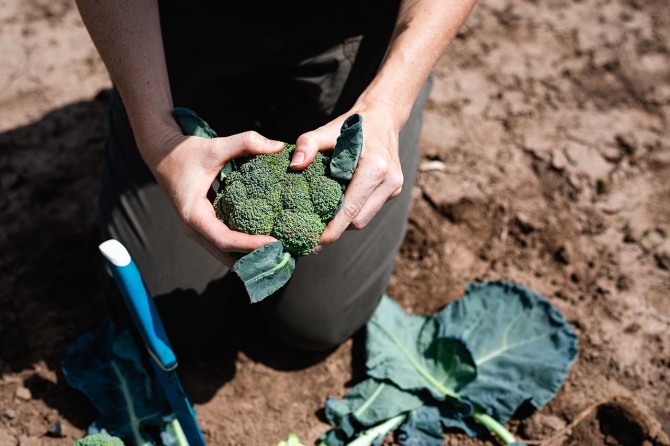U.S.: Eastern Broccoli Project on track to meet $100M goal

The U.S.'s Eastern Broccoli Project is on track to meet its goal of creating a US$100bn industry in a decade.
The project began in 2010, and currently the industry in the Eastern U.S. is worth around US$90m.
There are two remaining years of funding
“I think we’re going to hit it,” said Thomas Björkman, Cornell professor of horticulture and the Eastern Broccoli Project's principal investigator.
Between 2012 and 2017, the number of New York state broccoli farms increased from 290 to 535, and the number of Eastern Seaboard broccoli farms doubled.
However, about 85% of the broccoli that the East Coast consumes comes from California and Mexico. This is even with widespread enthusiasm for local food.
Challenges of growing broccoli in the East
One challenge of growing broccoli in the East is that the plant was originally cultivated as a winter vegetable in Mediterranean climates, so trying to grow it in the Eastern U.S. summer – when summer nights exceed 65 degrees Fahrenheit – ends up confusing the plant’s developmental cues.
But at such temperatures, the flower buds and heads often grow unevenly and don't look the same as West Coast broccoli. “It’s not at all marketable; you would never see it in a store,” Björkman said.
This year, two new papers clarify issues that should further help to grow the Eastern broccoli industry.
The first paper, a marketing study, “Produce Buyer Quality Requirements to Form an Eastern Broccoli Industry,” was published in the Journal of Food Distribution Research in March.
In the study, the authors surveyed a group of influential wholesale buyers. They wanted to gauge whether a growing appetite for local foods might outweigh the fact that Eastern broccoli looks a little different from Western broccoli, which is the industry standard.
Eastern-adapted varieties tend to have a lighter color or larger flower buds, despite still being high quality.
At the same time, sales of local foods increased from US$5bn to US$12bn between 2008 and 2014.
The survey revealed that in spite of a desire to source local foods, Eastern varieties needed to look similar to the Western standard to be marketable.
The researchers recommended local growers who raise Eastern varieties start by reaching out to natural food stores. These tend to be smaller and more forgiving of varied appearance.
Identifying broccoli traits
The second study, “Complex Horticultural Quality Traits in Broccoli Are Illuminated by Evaluation of the Immortal BolTBDH Mapping Population,” published Sept. 18 in the journal Frontiers in Plant Science, identifies some of the genetics behind these horticultural quality traits in order to help breeders produce Eastern broccoli that appears more like Western varieties, among other adaptations.
Authors included Björkman, Mark Farnham, a USDA Agricultural Research Service plant geneticist at the U.S. Vegetable Laboratory in Charleston, South Carolina, and Zachary Stansell, a graduate student in Bjorkman’s lab.
The researchers identified fixed positions on chromosomes that reveal genetic markers for important traits.
They evaluated 25 traits in six trait classes (architecture; biomass; timing of seasonal development, called phenology; the structures of leaves, and flowers; and head quality) and determined specific markers that, when present, are more likely to produce a uniform plant.
“We basically have markers for a lot of these traits, and that will really move breeding along,” Björkman said. Currently, project breeders are beginning to work with these markers.
“You can identify now if a parent has the genetic makeup for a trait,” Björkman said, “then if you cross it [with another compatible parent], you’re more likely to get [the offspring] you want.”
Several hybrids of broccoli have hit the market recently. More from both public and private breeders are nearing release by seed companies.
Over the next two years, Eastern Broccoli Project scientists will work with these companies and farmers. They aim to ensure a steady flow of seeds and broccoli to hit the US$100m goal.
The USDA-funded project includes seven other universities and 11 companies.
















































